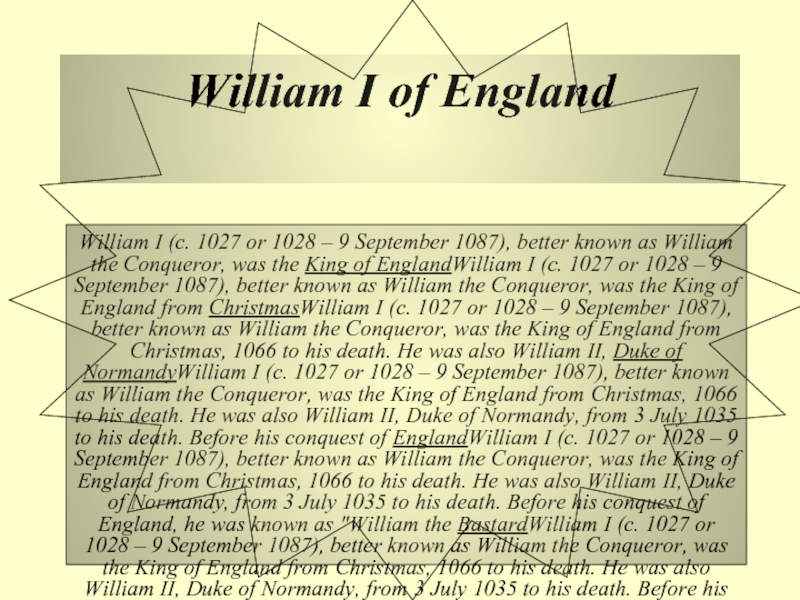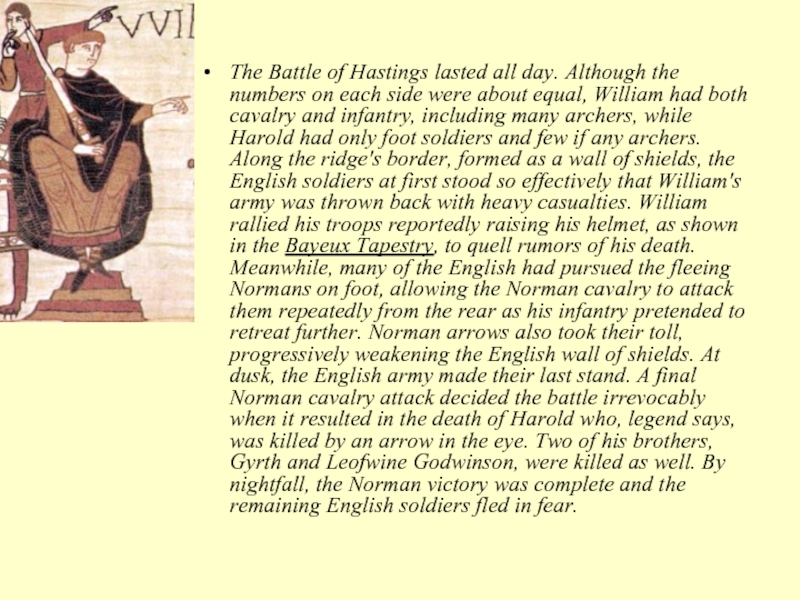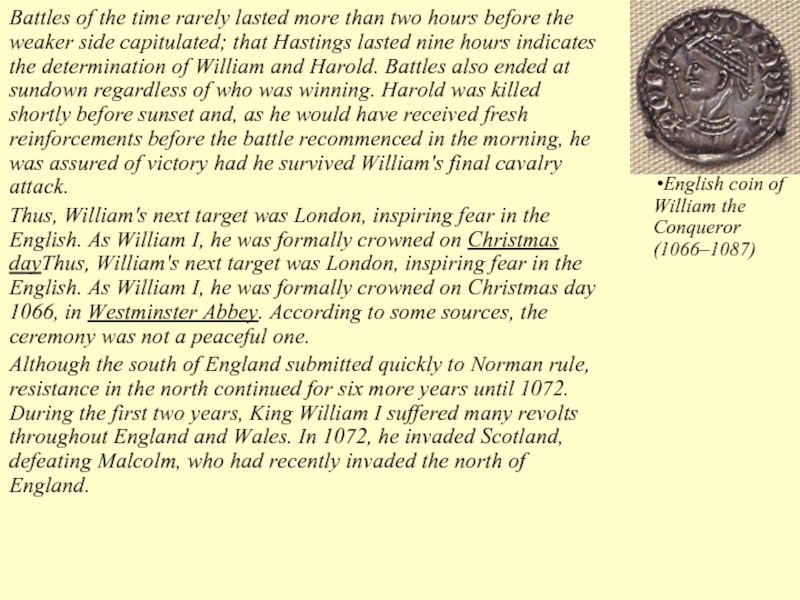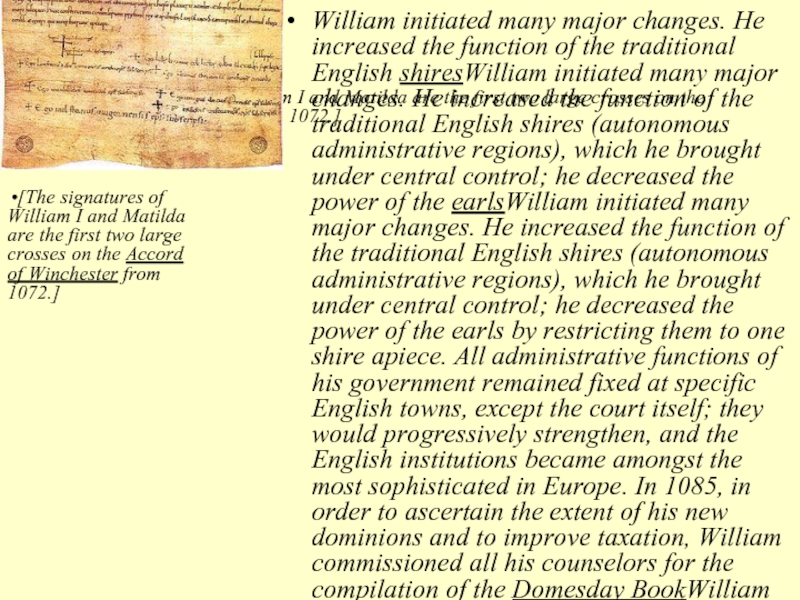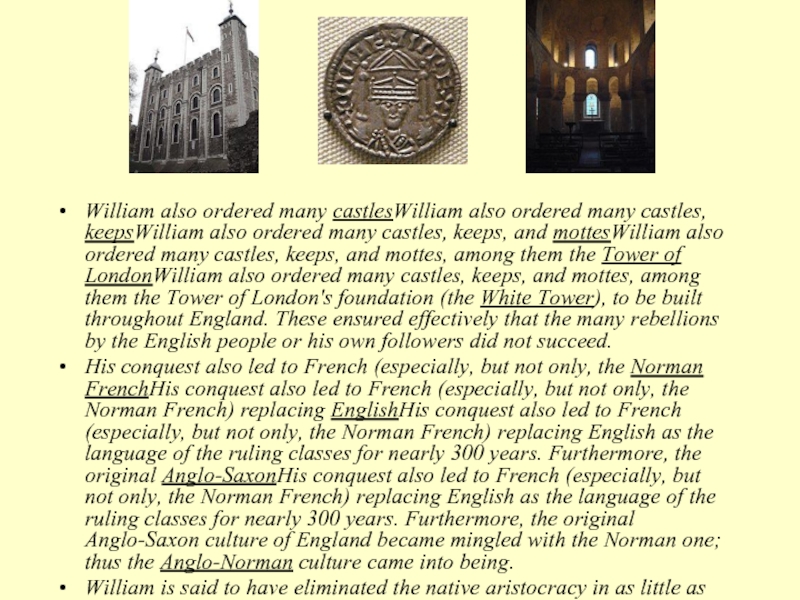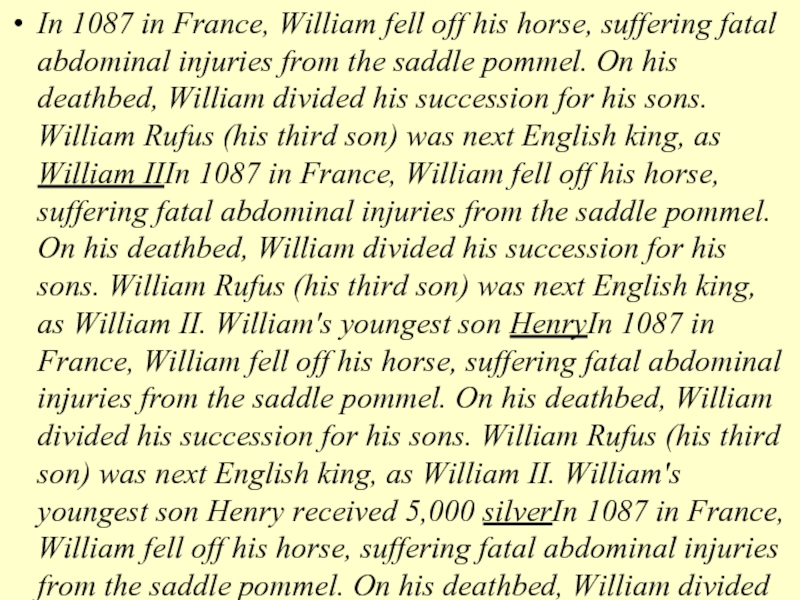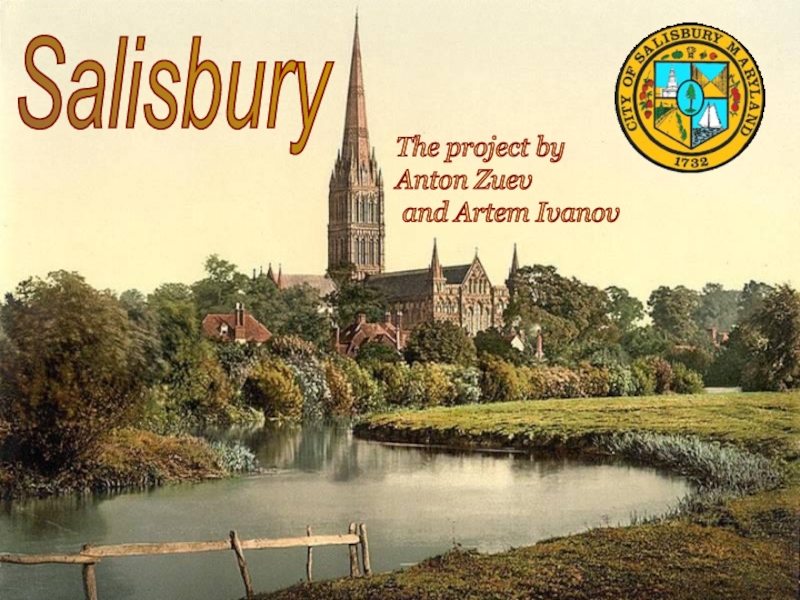9 September 1087), better known as William the Conqueror, was
the King of EnglandWilliam I (c. 1027 or 1028 – 9 September 1087), better known as William the Conqueror, was the King of England from ChristmasWilliam I (c. 1027 or 1028 – 9 September 1087), better known as William the Conqueror, was the King of England from Christmas, 1066 to his death. He was also William II, Duke of NormandyWilliam I (c. 1027 or 1028 – 9 September 1087), better known as William the Conqueror, was the King of England from Christmas, 1066 to his death. He was also William II, Duke of Normandy, from 3 July 1035 to his death. Before his conquest of EnglandWilliam I (c. 1027 or 1028 – 9 September 1087), better known as William the Conqueror, was the King of England from Christmas, 1066 to his death. He was also William II, Duke of Normandy, from 3 July 1035 to his death. Before his conquest of England, he was known as "William the BastardWilliam I (c. 1027 or 1028 – 9 September 1087), better known as William the Conqueror, was the King of England from Christmas, 1066 to his death. He was also William II, Duke of Normandy, from 3 July 1035 to his death. Before his conquest of England, he was known as "William the Bastard" (FrenchWilliam I (c. 1027 or 1028 – 9 September 1087), better known as William the Conqueror, was the King of England from Christmas, 1066 to his death. He was also William II, Duke of Normandy, from 3 July 1035 to his death. Before his conquest of England, he was known as "William the Bastard" (French: Guillaume le Bâtard) because of the illegitimacyWilliam I (c. 1027 or 1028 – 9 September 1087), better known as William the Conqueror, was the King of England from Christmas, 1066 to his death. He was also William II, Duke of Normandy, from 3 July 1035 to his death. Before his conquest of England, he was known as "William the Bastard" (French: Guillaume le Bâtard) because of the illegitimacy of his birth. William was already known as "the Conqueror" prior to 1066 due to his military successes in Brittany.To press his claim to the English crown, William invaded England in 1066, leading an army of NormansTo press his claim to the English crown, William invaded England in 1066, leading an army of Normans, BretonsTo press his claim to the English crown, William invaded England in 1066, leading an army of Normans, Bretons, DutchmenTo press his claim to the English crown, William invaded England in 1066, leading an army of Normans, Bretons, Dutchmen, and FrenchmenTo press his claim to the English crown, William invaded England in 1066, leading an army of Normans, Bretons, Dutchmen, and Frenchmen to victory over the EnglishTo press his claim to the English crown, William invaded England in 1066, leading an army of Normans, Bretons, Dutchmen, and Frenchmen to victory over the English forces of King Harold GodwinsonTo press his claim to the English crown, William invaded England in 1066, leading an army of Normans, Bretons, Dutchmen, and Frenchmen to victory over the English forces of King Harold Godwinson (who died in the conflict) at the Battle of HastingsTo press his claim to the English crown, William invaded England in 1066, leading an army of Normans, Bretons, Dutchmen, and Frenchmen to victory over the English forces of King Harold Godwinson (who died in the conflict) at the Battle of Hastings, and suppressed subsequent English revoltsTo press his claim to the English crown, William invaded England in 1066, leading an army of Normans, Bretons, Dutchmen, and Frenchmen to victory over the English forces of King Harold Godwinson (who died in the conflict) at the Battle of Hastings, and suppressed subsequent English revolts in what has become known as the Norman Conquest.
